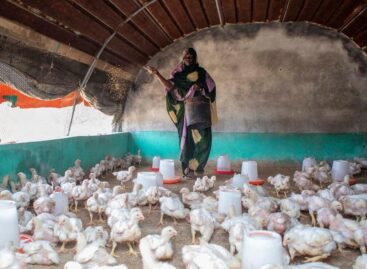FAO food price index rose slightly in July
The Food and Agriculture Organization of the United Nations (FAO) reported on Friday that the world food commodity price index averaged 130.1 points in July, up 1.6% from June. The increase was mainly due to higher international prices for meat and vegetable oils. Despite this, the index closed 18.8% lower than its peak in March 2022, but was 7.6% higher than a year ago.
 The FAO Food Price Index tracks monthly price changes for the most important food commodities in international trade. In July, increases in the meat and vegetable oil indices more than offset declines in the cereal, dairy and sugar indices.
The FAO Food Price Index tracks monthly price changes for the most important food commodities in international trade. In July, increases in the meat and vegetable oil indices more than offset declines in the cereal, dairy and sugar indices.
The FAO Cereal Price Index fell 0.8% in July compared to the previous month. Falling wheat and sorghum prices offset modest increases in maize and barley prices. The northern hemisphere harvest pushed down wheat prices, while unfavorable crop prospects in parts of North America had the opposite effect. The FAO All-Rice Price Index fell by 1.8%, reflecting ample export supplies and weak import demand.
In contrast, vegetable oil prices rose by 7.1% in July, reaching their highest level in three years. This rise was reflected in increases in palm, soybean and sunflower oil prices. Palm oil prices rose on strong global demand and improving competitiveness, while soybean oil prices climbed on expectations of strong demand from the US biofuels sector. Sunflower oil prices also rose on tighter export supplies from the Black Sea region. In contrast, rapeseed oil prices fell as European stocks built.
The FAO Meat Price Index rose by 1.2% in July, reaching a new historical high. Strong demand for beef and mutton, especially from China and the United States, contributed to the price increase. Poultry prices also rose slightly as key import partners resumed purchases after Brazil regained its avian flu-free status. Pork prices, however, fell on ample global supplies and subdued demand, especially in the European Union.
Dairy prices fell by 0.1% compared to June, the first decline since April 2024. Butter and milk powder prices eased, supported by ample export supplies and subdued import demand in Asia. At the same time, cheese prices continued to rise, driven by stronger demand in Asia and the Middle East, and shrinking export supplies from the European Union.
The FAO Sugar Price Index fell by 0.2% in July, marking the first time in five months that it has fallen. Expected global production growth for the 2025/26 season, particularly in Brazil, India and Thailand, has weighed on prices, but signs of a recovery in global sugar imports have moderated this decline somewhat.
Related news
FAO: International food prices have been declining since September
🎧 Hallgasd a cikket: Lejátszás Szünet Folytatás Leállítás Nyelv: Auto…
Read more >FAO-Ministry of Agriculture Scholarship Program Continues
🎧 Hallgasd a cikket: Lejátszás Szünet Folytatás Leállítás Nyelv: Auto…
Read more >FAO: 2026 is the International Year of Rangelands and Pastoralists
🎧 Hallgasd a cikket: Lejátszás Szünet Folytatás Leállítás Nyelv: Auto…
Read more >Related news
Akcenta: The Hungarian economy returned to growth in 2025, risk management will come to the fore in 2026
🎧 Hallgasd a cikket: Lejátszás Szünet Folytatás Leállítás Nyelv: Auto…
Read more >At profit temperature – 3 climate trends reshaping the economy
🎧 Hallgasd a cikket: Lejátszás Szünet Folytatás Leállítás Nyelv: Auto…
Read more >BMI: The manufacturing industry ended the year with sustained expansion
🎧 Hallgasd a cikket: Lejátszás Szünet Folytatás Leállítás Nyelv: Auto…
Read more >







